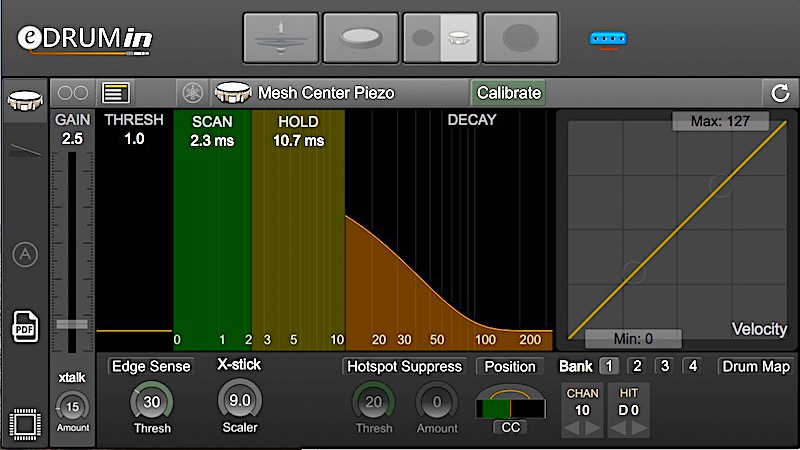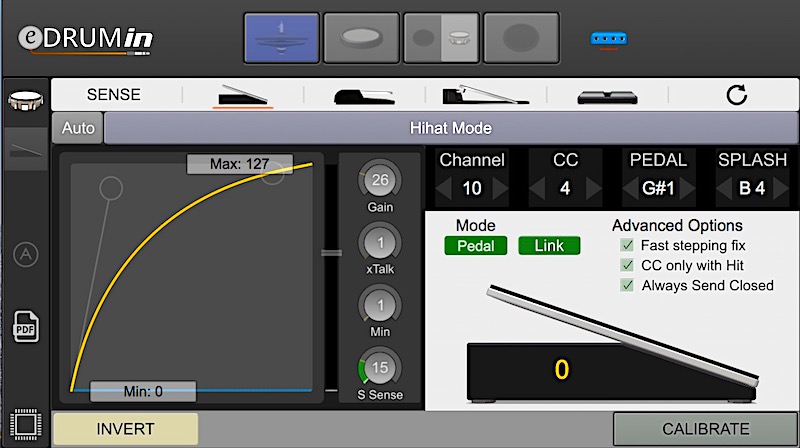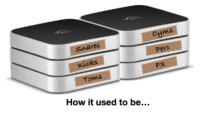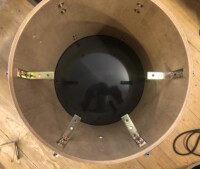This months article swerves uncomfortably close to a product review… ok, it is a product review. Apologies if that is a problem, but I honestly think that you (as an electronic drummer) should know about this, if you don’t already.
One of the great disappointments as a budding electronic drummer is finding that not everything is compatible – Roland hi hat pads wont work with Yamaha modules (and vice versa), Roland mesh pads don’t work very well with Yamaha modules (the impedance difference and hotter output gives a limited dynamic range and awkward ‘hump’ in the velocity curve), ride cymbal pads with two cables (Roland) aren’t compatible with modules which just need one cable (Yamaha)… etc etc. Obviously I’ve only mentioned Roland and Yamaha here, but cross compatibility is also an issue with pretty much all brands.
Obviously there ARE ways around it – plug your ‘A’ brand pads into an ‘A’ brand module and then go via MIDI into your ‘B’ brand module – but you need two modules, which doubles the expense, and its just a bit of a PITA.
But also, what about if brand ‘C’ module has a rubbish hi hat controller? Great sounds but thats it? Are you stuck? You could do the same as above – use a brand “B’ controller into a brand ‘B’ module, then MIDI into the brand ‘C’ module, but again, its all a bit of a faff.
Enter the Audiofront eDRUMin.
The eDRUMin 4 (there’s two versions – 4 and 10), is a small – 9 x 7 x 3cm – 3D printed plastic box with a load of sockets at either end, made by Robert Jonkman (who is also responsible for DSP Trigger). You plug your pads into it on one end, and on the other, it talks to the outside world via USB, MIDI, a (hi hat) controller input and a power input.
(The eDRUMin 10 is bigger, in an aluminium case, has 10 inputs plus both USB and both MIDI. It behaves in exactly the same way as the ‘4’, just with more trigger ins)
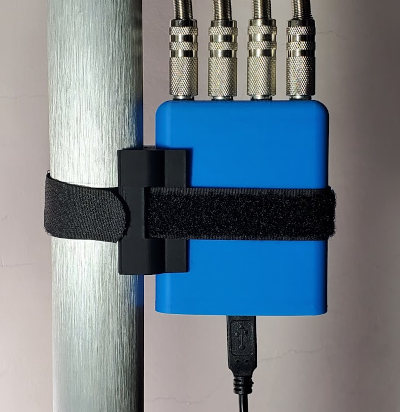 When connected to your computer you can use the software (Mac, PC and iOS) to made the eDRUMin understand what pads are plugged into it, and tweak the trigger response to get the best out of each pad. As long as you leave the unit connected to a computer for more than 5 seconds after you make your last edit, it will remember them, and you can unplug the computer and use the eDRUMin ‘standalone’.
When connected to your computer you can use the software (Mac, PC and iOS) to made the eDRUMin understand what pads are plugged into it, and tweak the trigger response to get the best out of each pad. As long as you leave the unit connected to a computer for more than 5 seconds after you make your last edit, it will remember them, and you can unplug the computer and use the eDRUMin ‘standalone’.
The software itself is very flexible, and I was able to get flawless triggering out of all the pads I tried with it, once I understood how the software screen is represented (the Threshold, Scan, Hold and Decay windows are one window showing the natural progression of the trigger signal, not four separate windows as I initially thought). The Decay window is probably more useful than that in 99% of drum modules as it really helps to stop the trigger from retriggering accidentally, and it needs to be set as ‘tightly’ as possible to allow for rolls etc. One thing I can happily say about the eDRUMin is I NEVER experienced double or false triggering, which cannot be said for many drum modules straight out of the box with non-factory pads.
Theres a very useful and informative PDF manual accessible directly from the editor, which is a handy touch. There’s also presets for a few pads (mainly Roland) but I understand theres lots more presets coming soon.
The inputs are stereo, and work with piezo/piezo pads or piezo/switch (so basically any pad). But each input can be split to act as 2 mono inputs, and the eDRUMin has a further trick up its sleeve – each mono input can use something called EdgeSense to create a separate trigger zone from the edge of a mono pad. Yes, mono pads can generate 2 zone information – head and rim – so mono pads can be technically turned into stereo pads. Firstly, let me say that not all pads are suitable – some are much better than others – but when it works, it works well. I got this working even on the iPad app triggering iMPC Pro, but I did find that certain pads like to be hit in a certain place, at a certain velocity to cleanly trigger the EdgeSense.
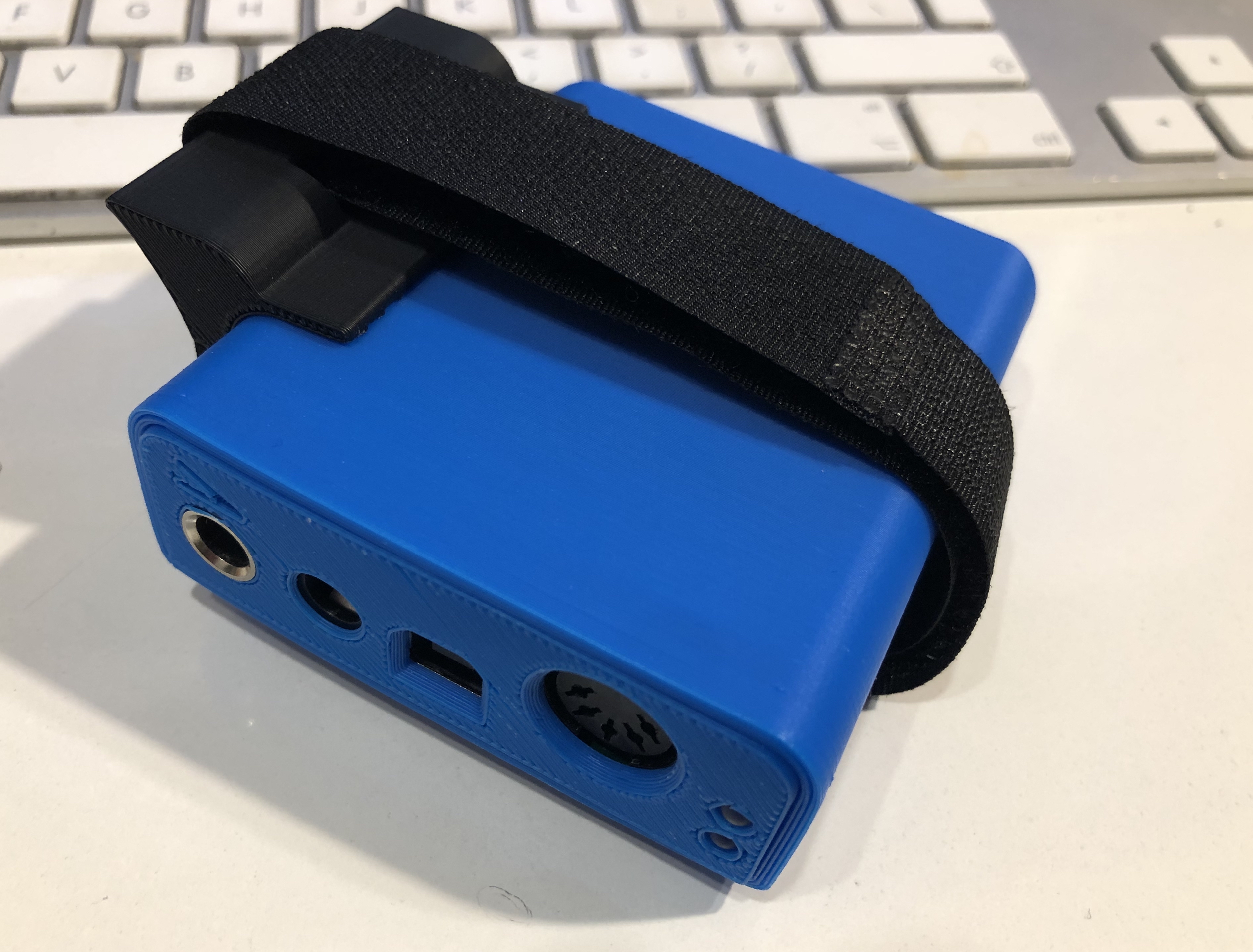 So in effect, a simple mono pad set can be made to be much more feature-rich than before. Roland ride cymbal pads, which usually need two cables to speak to a Roland module, can be used with a single cable into the eDRUMin and the EdgeSense will create the third zone. Impressive stuff.
So in effect, a simple mono pad set can be made to be much more feature-rich than before. Roland ride cymbal pads, which usually need two cables to speak to a Roland module, can be used with a single cable into the eDRUMin and the EdgeSense will create the third zone. Impressive stuff.
The obvious use for eDRUMin is not having to use a conventional drum module when using a plugin like Superior Drummer 3 , Addictive Drums 2, ezDrummer 2 etc. You can just plug your pads into the eDRUMin and then go via USB into your computer. The computer powers the eDRUMin over USB, so its one nice simple system. Its also capable of being powered by an iPad due to its low current draw, which is very useful
When using it live, you get a harness with a Velcro strap so you can strap the eDRUMin to your hi hat or other stand pipe to keep it neatly close by. When your pad settings are tweaked (and the eDRUMin can store 4 different settings for each pad in 4 different ‘banks’), you shouldn’t need to touch the eDRUMin – everything will be done at the computer level.
Its not 100% perfect, but for the price and feature set, I don’t think ANYONE would complain. My only issues were I found the MIDI socket to be incredibly tight, I struggled to find a power adaptor that worked (apparently the Boss PSA120S is perfect) and the 3D printed box looks a little basic close up (but no complaints – its incredibly strong, nicely shaped, and it is unlikely your audience will get within 30cm of it anyway!). But all things considered, its a great product. It’s so small that you could fit one in a pocket of your stick bag for emergencies. As far as the power supply is concerned, I just used a USB cable and an Apple iPhone plug to power it when it wasn’t connected to a computer or iPad, and that works perfectly.
So why I got onto the eDRUMin in the first place was that I have always had a soft spot for the Alesis DM10 module (not the kit, just the module, the kit suffered from sub standard pads for serious use). I’ve always thought the sounds were great, and as the modules can be picked up for not very much money, I’ve always had one kicking about – it’s paid it’s dues many times over. However, the original hi hat was awful, and the trigger settings are basic and not very flexible. The downsides are that the DM10 module has a latency of 14ms which makes it pretty slow (make that very slow).
So, I was curious as to if the eDRUMin could improve the DM10 module.
And the the answer is a resounding yes! Because I wasn’t limited to Alesis pads, I used a selection of hi hat controllers into the eDRUMin and I got REALLY good results. Not only did it suddenly start behaving like a more serious dum module but interestingly, the module latency over MIDI dropped from 14ms to 7ms – a much more respectable timing. Yes, for some odd reason, the Alesis trigger pages add 7ms to the latency, when compared to triggering over MIDI!
So extending this idea, now you CAN use your Roland hi hat controller on a Yamaha module, your Yamaha 3-zone pads on your Roland module, and any other combination you desire, simply by using an eDRUMin. And it works REALLY WELL!
The eDRUMin cost me $149 (£115 shipped to the UK) and I bought it myself because I was curious as to if it were as good as it looked on paper, it was not a freebie. I’m very pleased I did as it is a real Swiss Army Knife for the electronic drum world. So for the cost of a rubber pad, the eDRUMin lets us add any pads to almost any module (they need to have a MIDI In) or talk to any computer running a plugin.
So, if you need something small to trigger your plugins, something to go ‘between brands’ successfully, need a back up trigger interface to stick in your stick bag, or just fancy trying trying something different, then this may well be right up your street.
Simon Edgoose
November 2020


